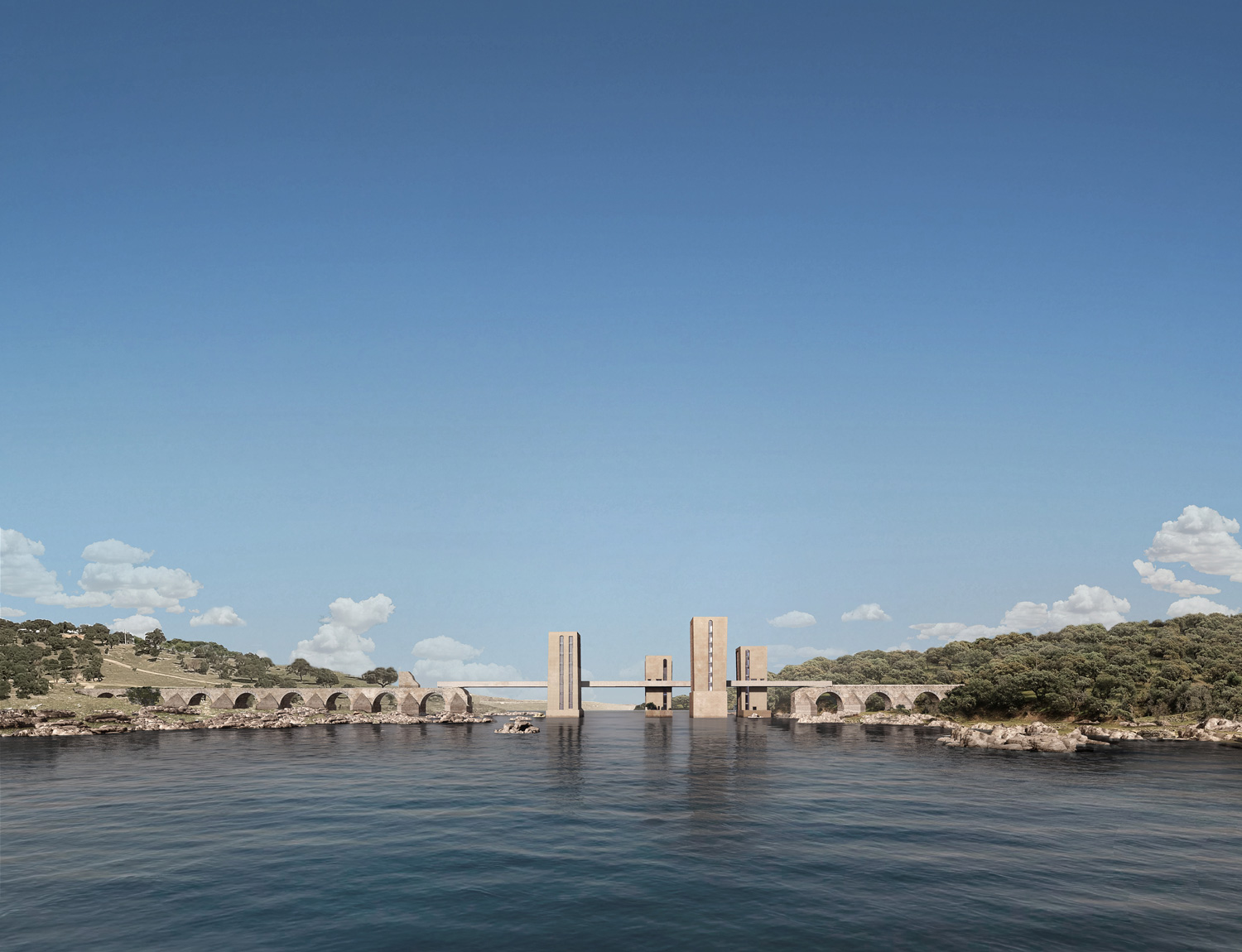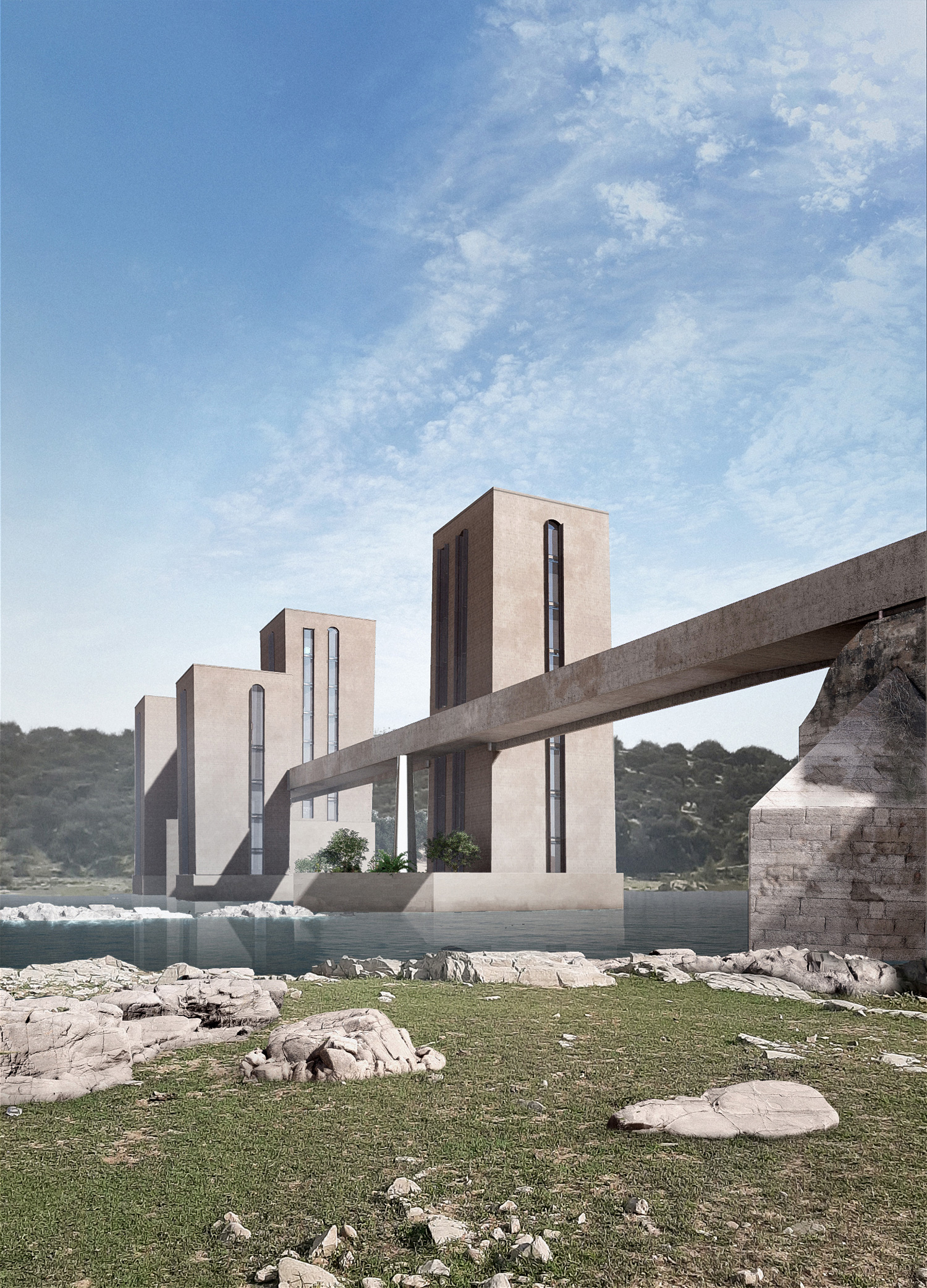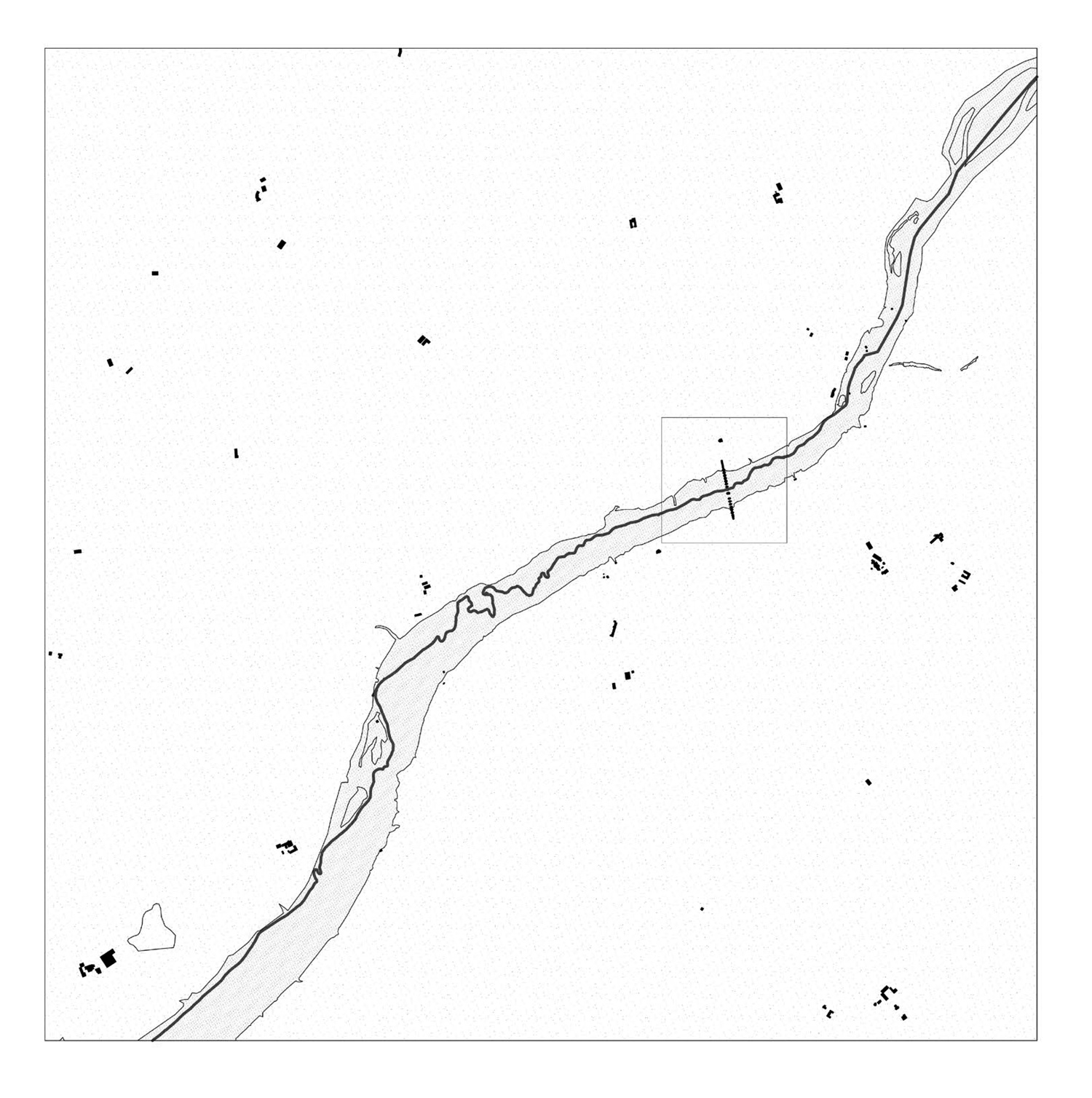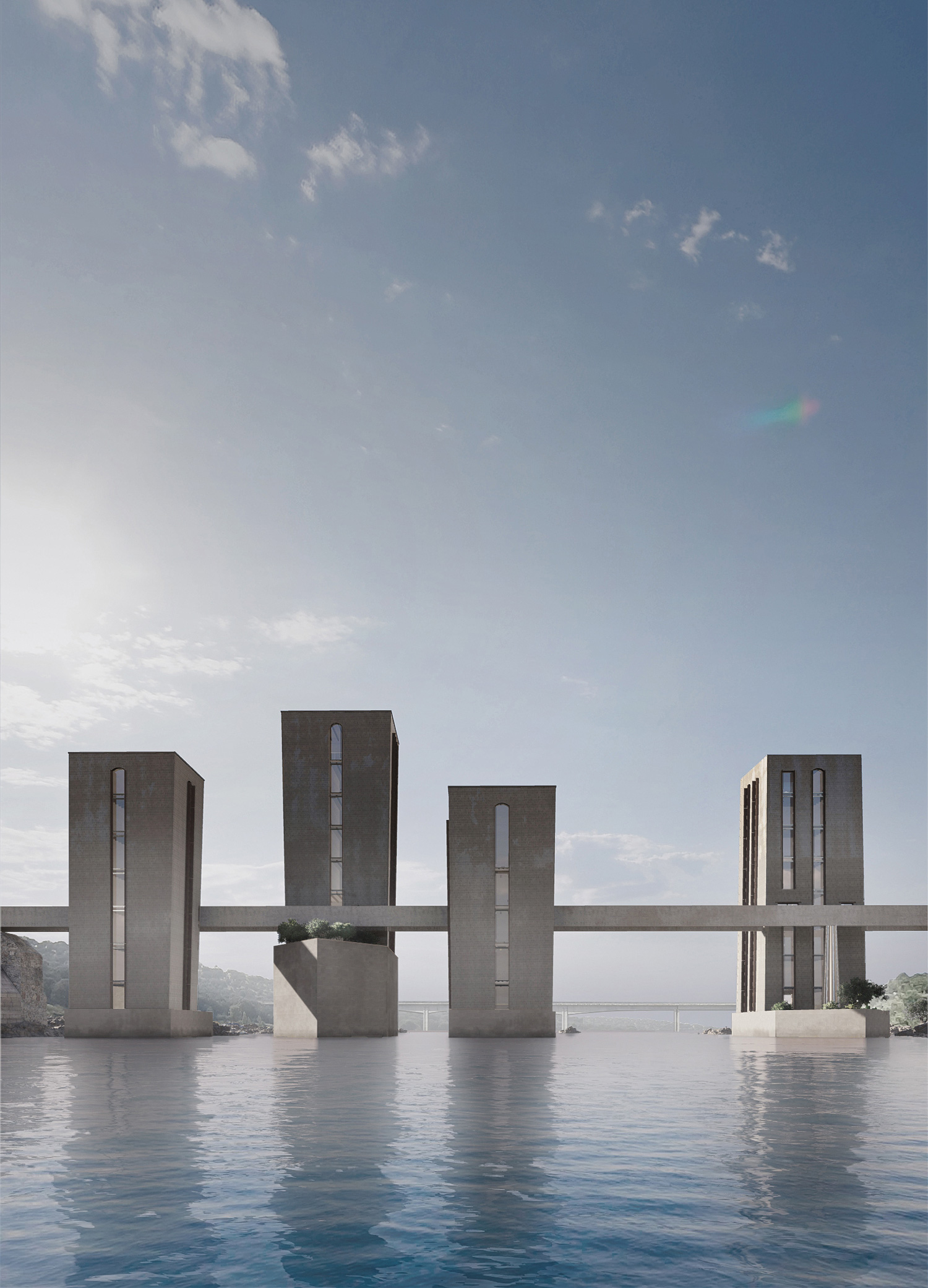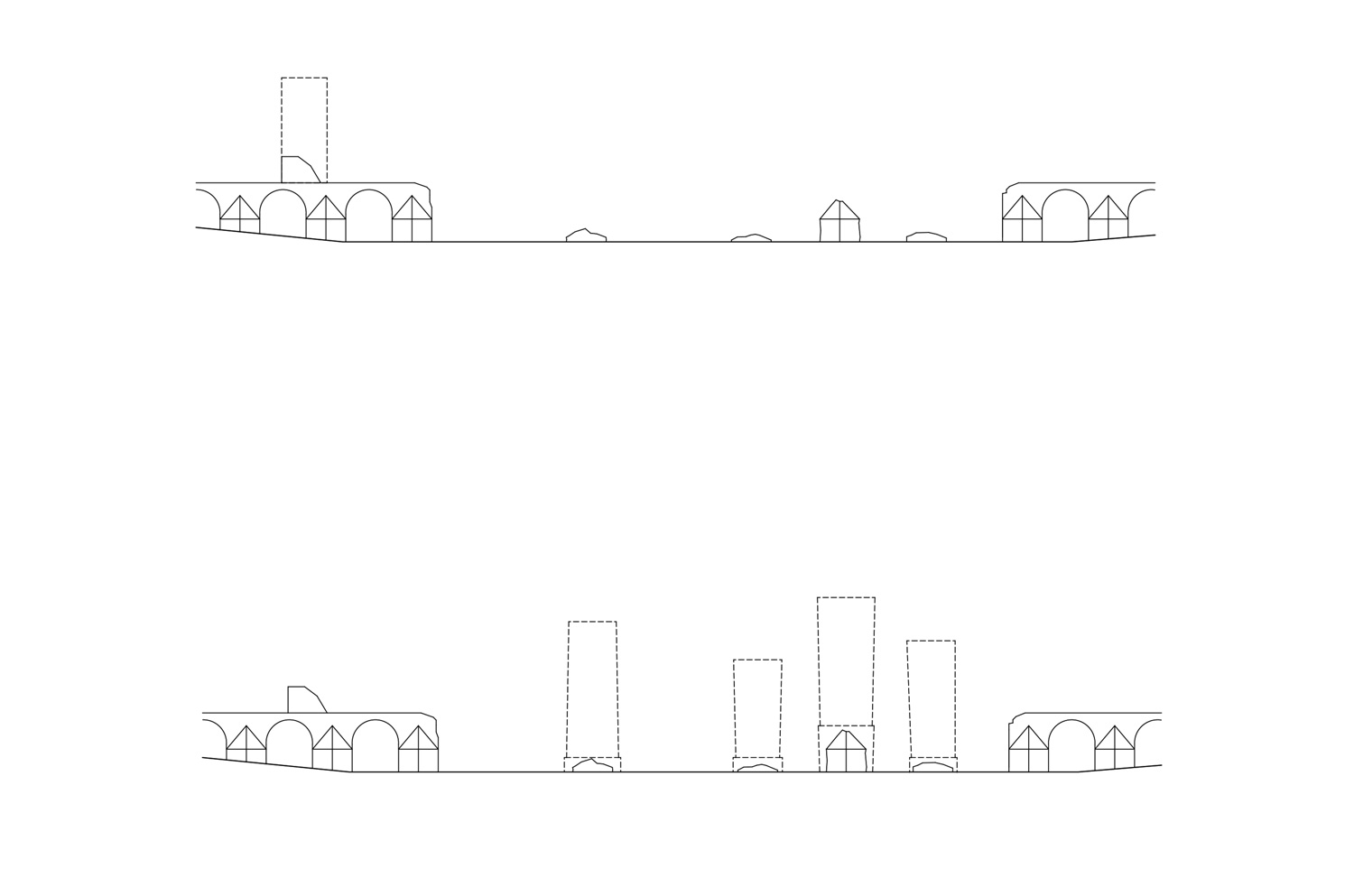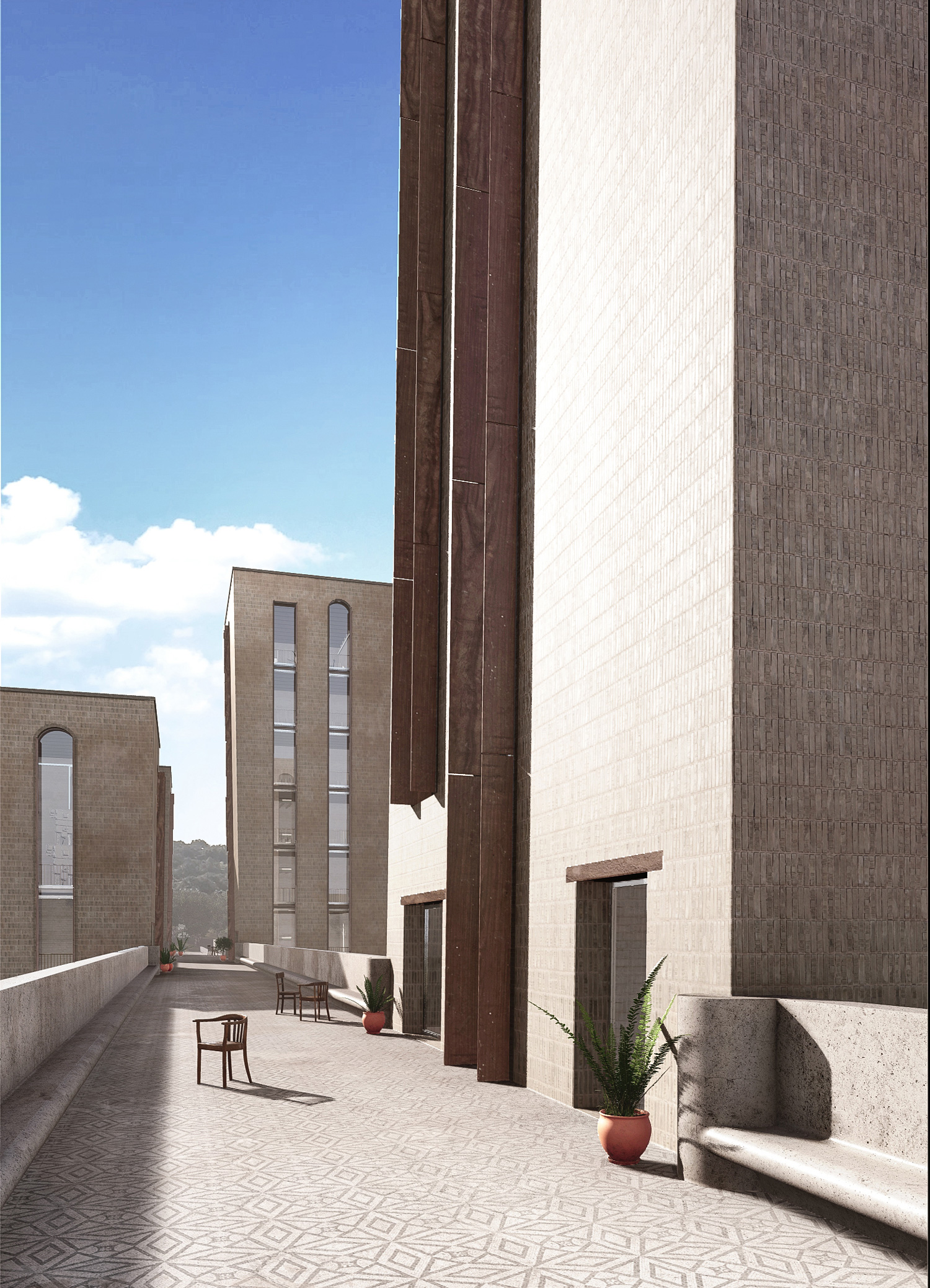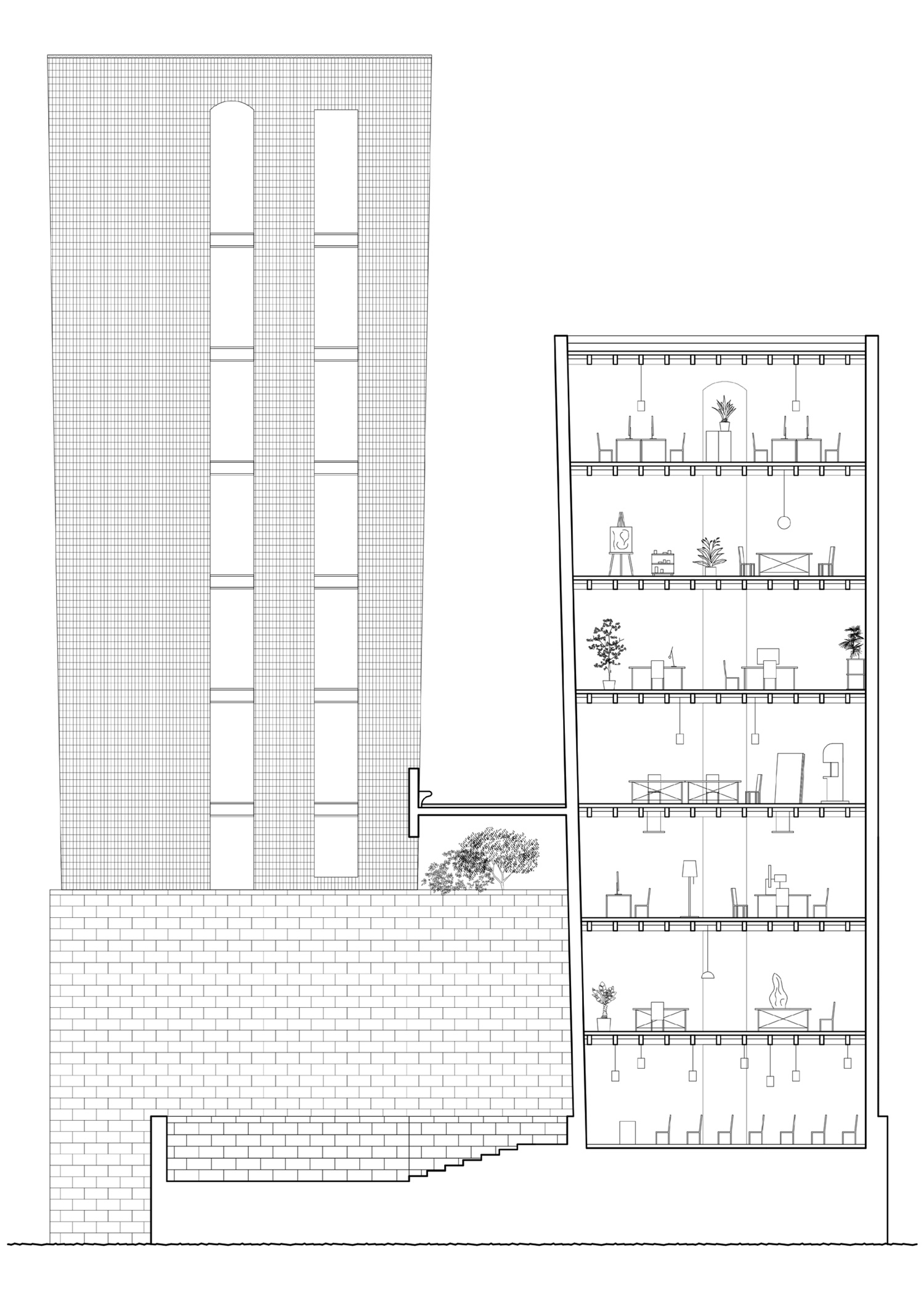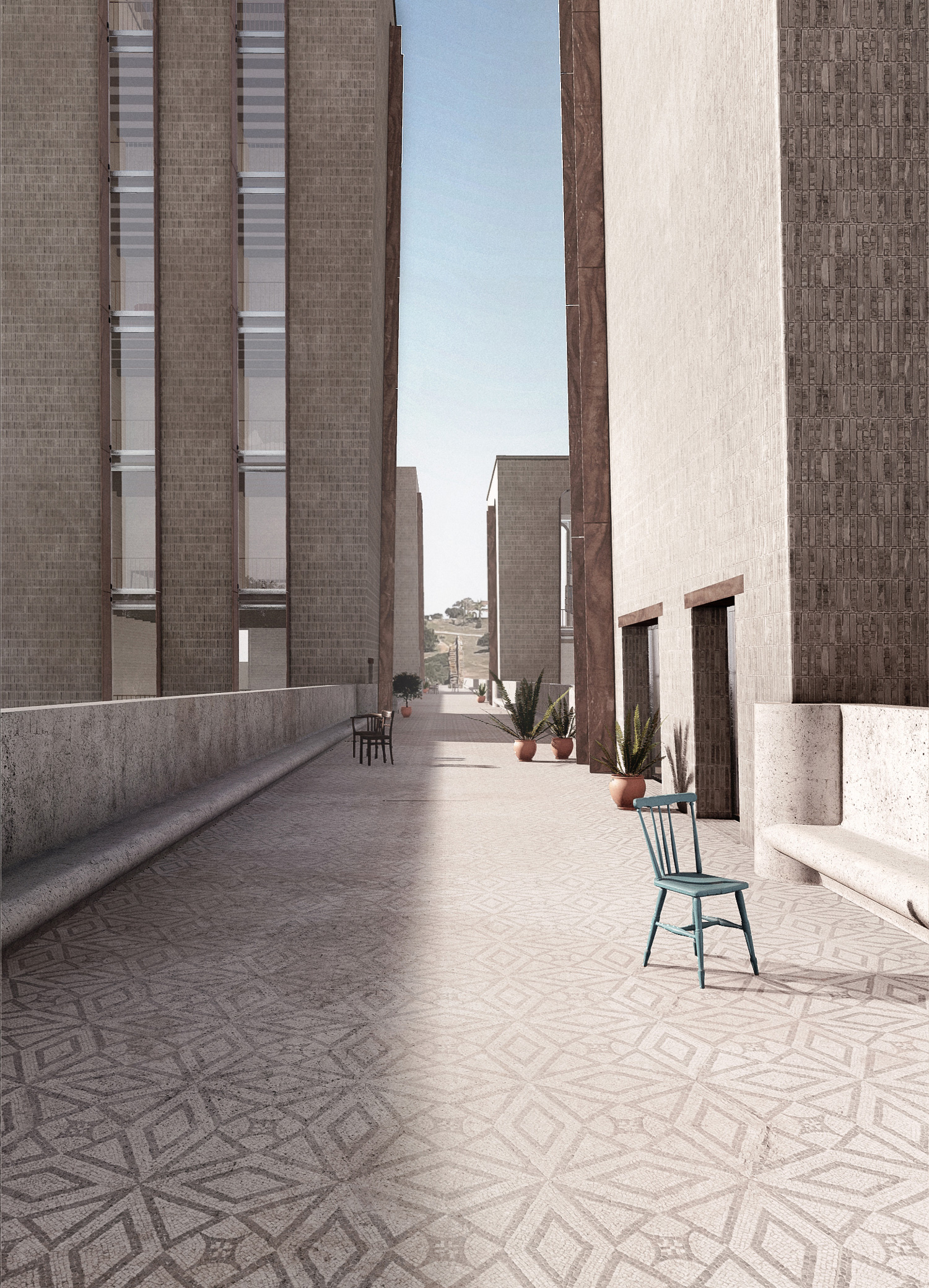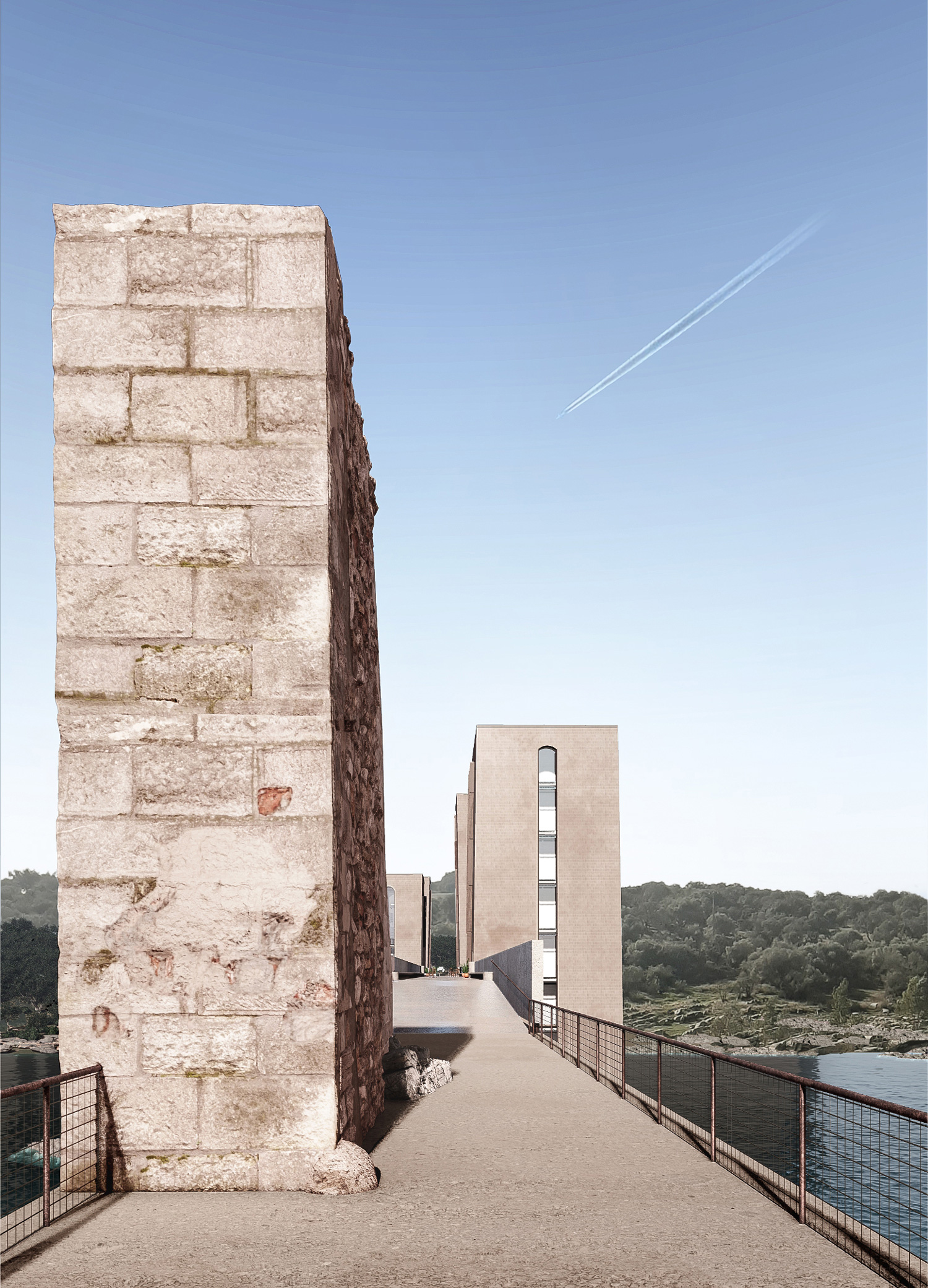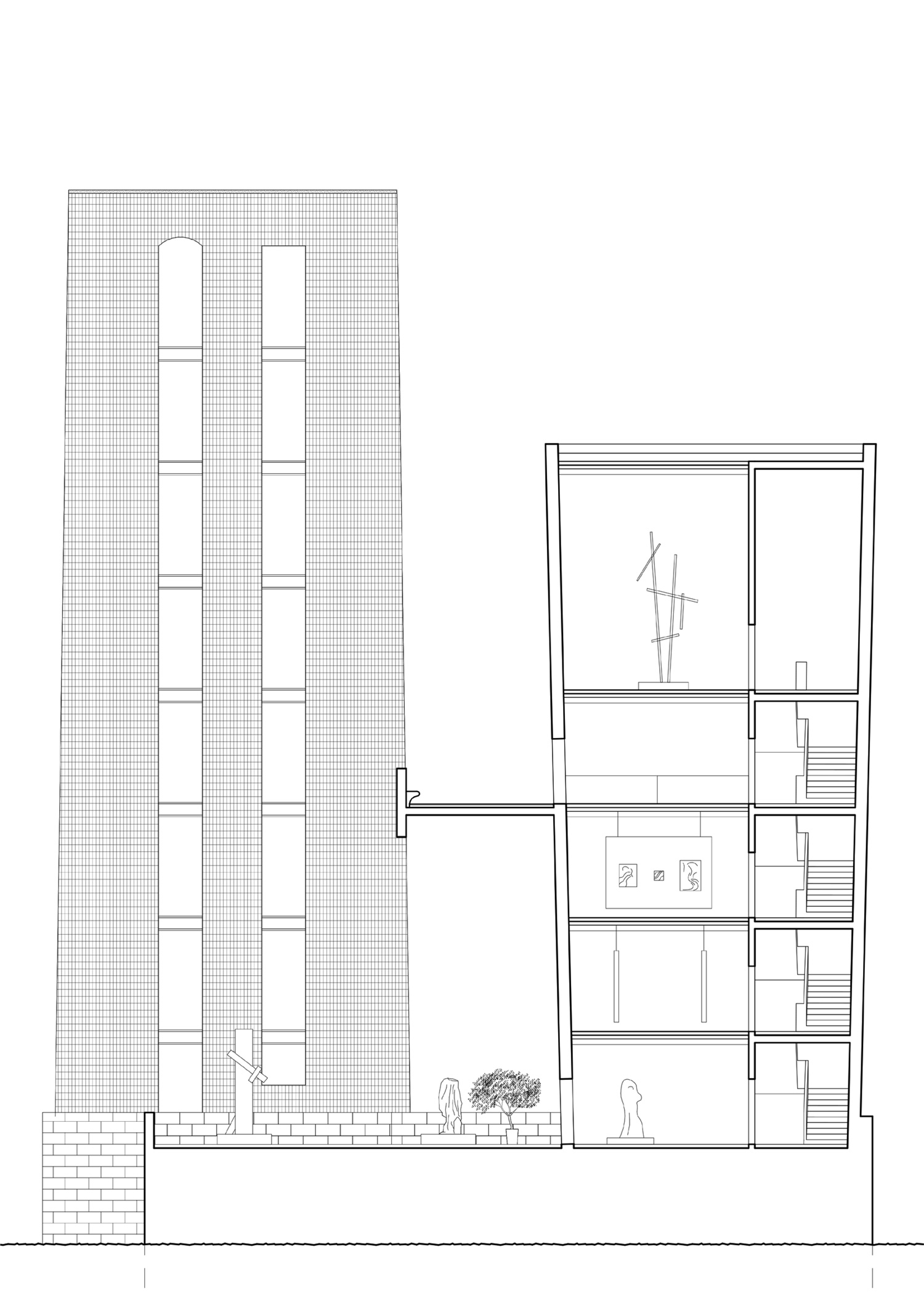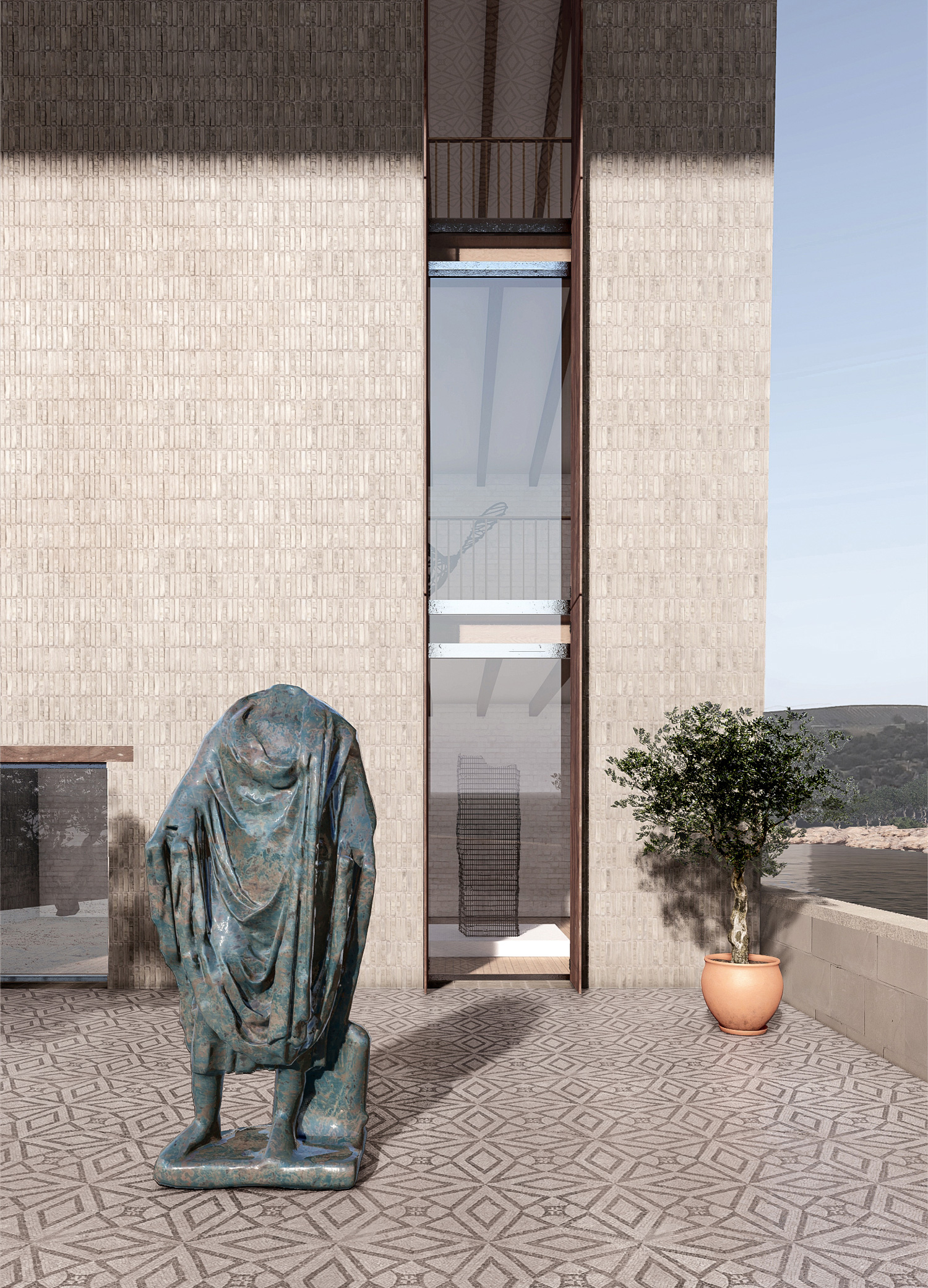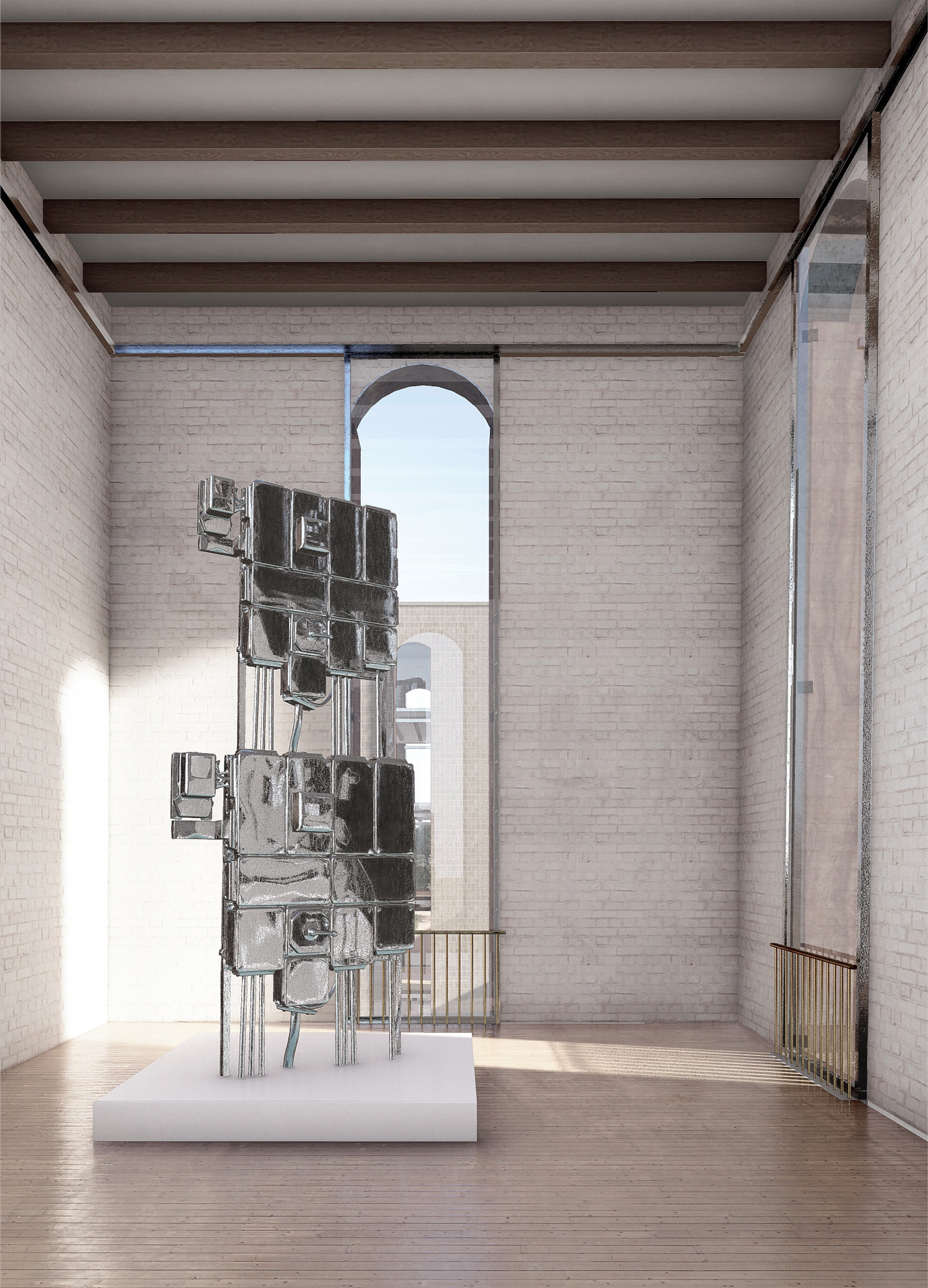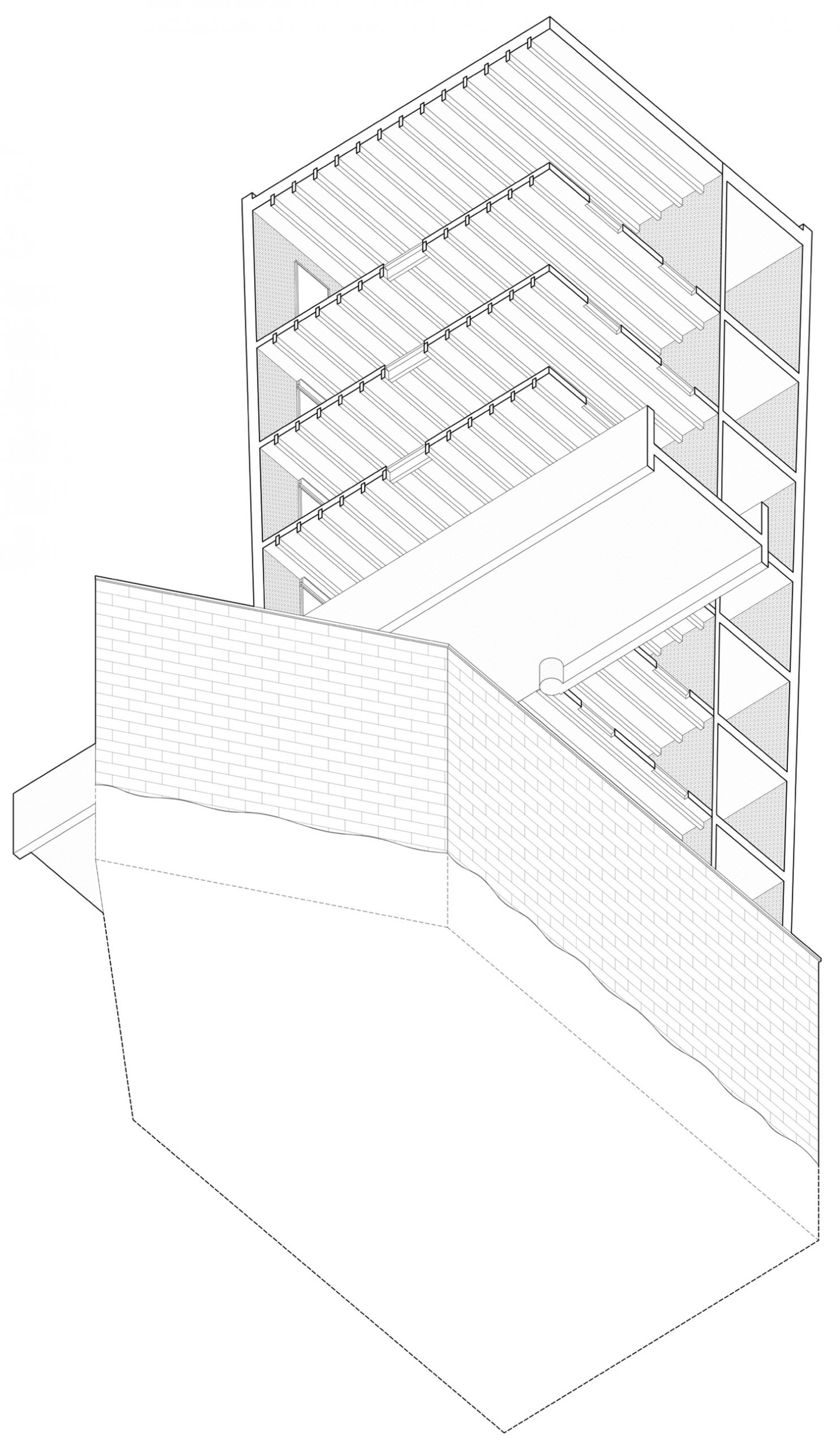☉ A propósito de habitar uma Pontea Ponte is an academic project by Dominic Fohrer for Bauhaus Universität Weimar and Faculty of Architecture of the University of Lisbon in 2022. It is located in Alentejo Portugal in a riverside setting. Its scale is medium with a surface of 3.000 sqm. Key materials are brick and stone.
The Ponte de Nossa de Senhora Ajuda lies in a picturesque setting, exactly on top of the border between Portugal and Spain. Built in the 16th century, it crosses the Guadiana River. Repeatedly destroyed and damaged in various wars, the bridge now stands out as a ruin. A large hole characterises its appearance, so that the connection across the river is broken. The task is to re-establish this connection and to make this beautiful place and its history accessible to the people by creating a visitor centre. It will include artist residences, exhibition space, a guest house and ateliers. The project thus addresses both the question of how to deal with the extensive history of the site as a border area, and how to deal with a sensitive heritage of this kind.
The design stands out as a sculpture that barely makes contact with the existing bridge. An outline, reminiscent of a skyline. An analogy for civilisation, standing precisely on the broken connection between two cultures. The design wants to celebrate the in-between space of transition. A symbol for the metaphorical space that brings together different cultures and allows new ones to emerge. As clear layers of time, old and new complement each other to form a common gesture. The figure of the towers is derived from the remnant of an old guard on the ruins. Formerly a symbol of deterrence and surveillance, the meaning is reversed. Today the towers are an ensemble that open up in all directions, arouses curiosity and invites people to discover. Set on the old, destroyed foundations, the towers continue to tell the story of the bridge. The towers are separated according to the functions of living, exhibition, guesthouse and work. The ground floor/bridge level is exclusively occupied by more public spaces such as shops, cafés and workshops, thus setting the individual towers in relation to each other.
Conceived as solid masonry with wooden beam ceilings, the ensemble pays homage to the ancient art of building and at the same time demonstrates the contemporary implementation of the same type of construction. The openings emphasise the sculptural/symbolic approach while providing targeted views of the surroundings. Shutters line the openings, while at the same time the inner layer of the exterior walls is made of clay bricks. This allows the interior temperature to be regulated easily and naturally in this hot environment. The new foundations of the towers are used as an outdoor space. A metal support rises on one of the foundations to support the almost floating bridge. Two elements that break the clarity of the rest of the construction and create a new unexpected image. An image that represents progress. Progress supported by old knowledge.
